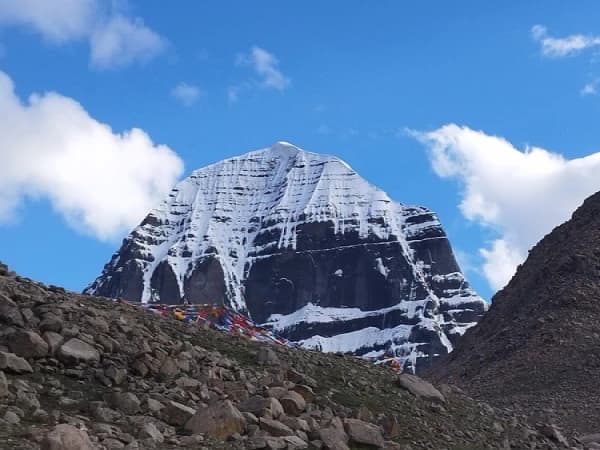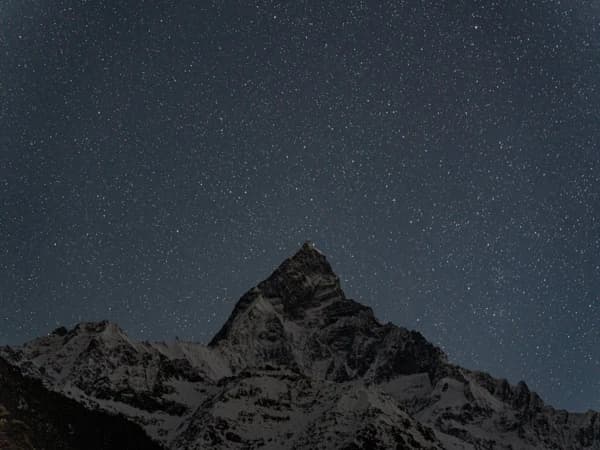Trekking the Annapurna Circuit is an amazing adventure that takes you through the stunning and culturally diverse Nepal Himalayas. The trek involves steep footpaths, valley floors, contour paths, rope bridges, and eventually leads to the Thorung La Pass at 5,416 meters above sea level, where you can see breathtaking views of the Annapurna and Dhaulagiri mountain ranges.
However, to successfully complete this trek, you need to be physically, mentally, and practically prepared. Additionally, it's helpful to have some tips and tricks to use along the way. Here are 10 tips for trekking the Annapurna Circuit that will help you make the most of your journey.
Know the Best Time to Trek
The Annapurna Circuit is open for climbing year-round, but the best times for climbing are spring (March to May) and autumn (September to November). During these seasons, the weather is stable and clear, and the views of the mountains are breathtaking. Spring is the best time to witness the beautiful bloom of azaleas, while fall offers clear skies and great views of the mountains.
However, hiking during high season can be crowded and you may need to book accommodation in advance. Hiking during the monsoon season (June to August) can be difficult due to heavy rains and landslides, while walking during the winter (December to February) can be cold and snowy. It is essential to check the weather forecast and plan accordingly before embarking on a trip.
Obtain the Necessary Permits

Obtaining the necessary permits is crucial before trekking the Annapurna Circuit. You need to get two permits - the Annapurna Conservation Area Permit (ACAP) and the Trekker's Information Management System (TIMS) card.
The ACAP is issued by the Annapurna Conservation Area Project (ACAP) and costs around USD 30. The permit fee is used to preserve the natural environment and promote sustainable tourism in the region. The TIMS card is issued by the Nepal Tourism Board and costs around USD 20. The TIMS card helps to keep a record of trekkers in the region and assists in case of any emergencies.
You can obtain these permits either by yourself or through a registered trekking agency in Nepal. If you choose to apply for the permits by yourself, you need to visit the respective offices in Kathmandu or Pokhara and provide the necessary documents such as a passport-sized photo, a copy of your passport, and your trekking itinerary. If you choose to go through a trekking agency, they will handle the permit process for you.
It is important to note that you need to carry the permits with you at all times during the trek and show them to the authorities when asked. Failure to obtain the necessary permits can result in fines or even deportation from the region.
Get in Shape Beforehand
Getting in shape beforehand is important before trekking the Annapurna Circuit. The trek involves long hours of walking on steep and rugged terrain, which can be physically challenging even for experienced trekkers. Therefore, it is recommended that you start a fitness routine at least two to three months before the trek.
Your fitness routine should include cardio exercises such as running, cycling, or swimming to improve your stamina and endurance. Strength training exercises such as squats, lunges, and push-ups will help to build muscle and prepare your body for carrying a backpack. You should also incorporate stretching exercises to improve your flexibility and prevent any injuries.
It is essential to listen to your body and not overexert yourself during the training period. Gradually increase the intensity and duration of your workouts to avoid any injuries or burnout. Consult a fitness expert or a doctor before starting your training routine if you have any medical conditions.
Preparing yourself physically for the trek will not only make the journey smoother but also allow you to enjoy the beautiful scenery without worrying about exhaustion or injuries.
Pack Smart and Light
Packing smart and light is crucial when trekking the Annapurna Circuit. You need to carry all your essential items, including clothing, toiletries, and equipment, but at the same time, you don't want to carry unnecessary weight that can make the trek difficult and tiring.

Here are some tips to pack smart and light for the Annapurna Circuit:
- Clothing: Pack lightweight and breathable clothing suitable for the trekking season. Layering is essential to regulate your body temperature. Carry a waterproof jacket and pants to protect yourself from rain.
- Footwear: Invest in a good pair of trekking shoes with proper ankle support and grip. Carry a pair of comfortable and lightweight sandals for use around the teahouses.
- Equipment: Carry a good quality and lightweight sleeping bag suitable for the trekking season. A headlamp, trekking poles, and a water bottle are essential items to carry.
- Toiletries: Pack basic toiletries such as a toothbrush, toothpaste, sunscreen, and hand sanitizer. Carry wet wipes and tissues for personal hygiene.
- Miscellaneous: Carry a backpack with a rain cover, a hat or cap, and sunglasses. A book or a deck of cards can be useful for entertainment during downtime.
It is essential to avoid carrying unnecessary items such as heavy electronic devices, multiple pairs of shoes, or excess clothing. The weight of your backpack should not exceed 10-12 kg to avoid fatigue and strain on your back.
Dress for the Occasion
Dressing appropriately for the occasion is crucial when trekking the Annapurna Circuit. You need to be prepared for changing weather conditions, including rain, snow, and extreme temperatures.

Here are some tips to dress for the occasion when trekking the Annapurna Circuit:
- Layering: Dress in layers to regulate your body temperature. Start with a moisture-wicking base layer to keep you dry and comfortable. Add an insulating mid-layer for warmth, and a waterproof outer layer to protect you from rain and wind.
- Headwear: Carry a warm hat or beanie to protect your head and ears from the cold. A buff or a scarf can be useful to protect your face and neck from the sun or cold wind.
- Footwear: Wear a good pair of trekking shoes with proper ankle support and grip. Carry a pair of lightweight and comfortable sandals to use around the teahouses.
- Gloves: Carry a pair of lightweight and waterproof gloves to protect your hands from the cold and wind.
- Sunglasses: Wear sunglasses with UV protection to protect your eyes from the sun and snow glare.
It is essential to avoid wearing cotton clothing, as it retains moisture and takes a long time to dry, making you feel cold and uncomfortable. Instead, wear synthetic or woolen clothing that dries quickly and provides insulation even when wet. Dressing appropriately for the occasion will keep you comfortable and safe during the trek.
Stay Hydrated and Nourished
Staying hydrated and nourished is essential when trekking the Annapurna Circuit. You will be burning a lot of calories and sweating, which can lead to dehydration and fatigue if not managed correctly.
Here are some tips to stay hydrated and nourished when trekking the Annapurna Circuit:
- Drink plenty of fluids: Carry a reusable water bottle and drink at least 3-4 liters of water every day. Staying hydrated will help you avoid altitude sickness and keep you energized.
- Carry water purification tablets: In some areas, the water sources may not be safe for consumption. Carry water purification tablets or a water filter to ensure safe drinking water.
- Eat a balanced diet: Teahouses along the trail serve a variety of food options. Eat a balanced diet rich in carbohydrates, proteins, and fats to fuel your body. Carry energy bars, nuts, and dried fruits as snacks.
- Avoid alcohol and caffeine: Alcohol and caffeine can lead to dehydration and make you feel tired. Avoid or limit their consumption during the trek.
- Acclimatize properly: Acclimatize gradually to avoid altitude sickness. Take frequent breaks, stay hydrated, and avoid overexerting yourself.
It is essential to listen to your body and recognize the signs of dehydration and fatigue. Drink water regularly, even if you don't feel thirsty. Eating well and staying hydrated will help you enjoy the trek and reach your destination safely.
Acclimatize Properly
Acclimatizing properly is crucial when trekking the Annapurna Circuit. As you ascend higher altitudes, the air pressure and oxygen levels decrease, making it harder for your body to adapt to the environment. Failure to acclimatize properly can lead to altitude sickness, which can be life-threatening.

Here are some tips to acclimatize properly when trekking the Annapurna Circuit:
- Ascend gradually: Ascend gradually, and do not gain more than 300-400 meters in altitude per day. Take rest days to acclimatize, especially when crossing high passes.
- Hydrate well: Drink plenty of fluids, preferably water, to stay hydrated. Dehydration can worsen the symptoms of altitude sickness.
- Eat well: Eat a balanced diet rich in carbohydrates, proteins, and fats to fuel your body. Avoid heavy meals and limit your alcohol and caffeine intake.
- Listen to your body: Recognize the symptoms of altitude sickness, such as headache, nausea, dizziness, and shortness of breath. If you experience any of these symptoms, descend to a lower altitude immediately and rest.
- Carry medication: Carry medication for altitude sickness, such as acetazolamide, as a precautionary measure. Consult your doctor before taking any medication.
It is essential to prioritize your health and safety when trekking the Annapurna Circuit. Acclimatizing properly will help you avoid altitude sickness and enjoy the trek.
Respect Local Culture and Environment
Regarding the nearby culture and environment is crucial when trekking the Annapurna Circuit. The locale is domestic to different ethnic communities with special societies and conventions, and the characteristic environment is delicate and should be preserved.
Here are a few tips to regard the neighborhood culture and environment when trekking the Annapurna Circuit:
- Dress humbly: Dress suitably and unassumingly, particularly when going by devout locales or connection with local people. Regard nearby traditions and dodge wearing uncovering clothing.
- Regard neighborhood conventions: Be aware of nearby conventions and traditions. Inquire for consent some time recently taking photos of individuals or social artifacts.
- Use responsible trekking practices: Use responsible trekking practices, such as carrying your trash, using biodegradable toiletries, and avoiding damaging flora and fauna.
- Back nearby communities: Remain in locally possessed guesthouses and purchase neighborhood painstaking work to bolster the nearby economy.
- Learn approximately the culture: Learn around the neighborhood culture and traditions some time recently you go. Be open-minded and willing to memorize and encounter unused things.
It is basic to be careful of your activities and their effect on the neighborhood community and environment. By regarding the neighborhood culture and environment, you'll be able to offer assistance to protect the interesting legacy and natural beauty of the Annapurna Circuit for future eras.
Hire a Reliable Guide and Porter
Hiring a reliable guide and porter is essential when trekking the Annapurna Circuit. The trek can be challenging, and having a guide and porter can make your experience safer, more comfortable, and more enjoyable.
Here are some reasons why you should consider hiring a guide and porter:
- Safety: A reliable guide can help you navigate the trail, avoid hazards, and recognize symptoms of altitude sickness. They can also assist you in case of an emergency.
- Comfort: A porter can carry your heavy backpack, making your trek more comfortable and less strenuous.
- Local knowledge: A local guide can provide you with valuable information about the local culture, traditions, and environment. They can also recommend the best places to eat, stay, and rest.
- Language barrier: Many locals in the Annapurna region do not speak English. A guide can act as a translator and help you communicate with the locals.
- Support the local community: Hiring a guide and porter is an excellent way to support the local economy. Many guides and porters are from the local community and depend on tourism for their livelihood.
When hiring a guide and porter, make sure to choose a reputable and licensed agency. Ask for references and read reviews from other travelers. Communicate your expectations and needs clearly, and make sure to agree on the price and services before starting your trek.
In conclusion, hiring a reliable guide and porter can enhance your trekking experience and ensure your safety and comfort. It can also help support the local community and economy.
Keep a Positive Attitude and Be Flexible

Walking the Annapurna Circuit requires flexibility and an optimistic outlook. The journey can be difficult, and unforeseen circumstances can happen. You can overcome obstacles and get the most out of your experience by being flexible and maintaining a positive mindset.
When trekking the Annapurna Circuit, keep an optimistic outlook and be adaptable by following these suggestions:
- Be prepared for the unexpected: The weather and trail conditions can change rapidly, and transportation can be unpredictable. Be prepared for delays or changes in plans.
- Embrace the journey: Focus on the journey, not just the destination. Take in the breathtaking scenery, meet new people, and enjoy the experience.
- Pace yourself: Don't push yourself too hard. Take breaks when needed, and listen to your body. Remember, it's not a race.
- Stay motivated: Set achievable goals and celebrate your accomplishments. Use positive self-talk and visualization to stay motivated.
- Be open-minded: Embrace new experiences and be open to learning about the local culture and environment.
- Practice gratitude: Be grateful for the opportunity to trek the Annapurna Circuit and appreciate the support of your guide and porter.
In conclusion, keeping a positive attitude and being flexible can help you overcome challenges and make the most of your trekking experience. Remember to embrace the journey, stay motivated, and practice gratitude.
If you're ready to take on the challenge of trekking the Annapurna Circuit, Regulus Treks & Expedition Pvt Ltd is here to help. Our experienced guides and porters will ensure that you have a safe and enjoyable trekking experience. From obtaining permits to packing smart and light, we'll take care of all the details so that you can focus on the journey ahead. Contact us today to learn more about our Annapurna Circuit trekking packages and start planning your adventure.












